Right now,a one-legged magpie perched atop a pole has fixed its gaze on wildlife scientist Dr Vanessa Pirotta’s plate of corn fritters among the other midday grazers at The Cove Dining in Abbotsford,inner west Sydney. It’s the latest animal cameo in long procession of creatures that’ve defined Pirotta’s life as a wildlife scientist.
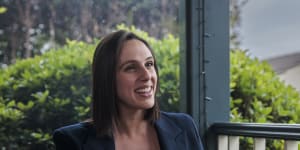
Lunch with Dr Vanessa Pirotta,wildlife scientist,at The Cove Dining.Brook Mitchell
“They can recognise up to thirty faces,” Pirotta says,looking up at the magpie. “Isn’t that cool?” A pause. “I don’t think they’re being trafficked.”
The sound-bite friendly factoid and follow-up aside encapsulates Pirotta’s dual role as a seasoned science communicator and analytical conservation researcher. She’s as at ease in front of a TV camera as she is elbow-deep in hot whale guts. (Pirotta keeps a pair of gumboots in her car at all times should the chance arise to perform a whale necropsy.)
While Pirotta’s most recent research involved teaching AI-powered 3D scans to recognise the silhouettes of blue-tongue lizards,lorikeets and turtles concealed in wildlife traffickers’ luggage,the breakthrough that ushered her to a global stage came in 2018 with a whale snot-collecting drone Pirotta developed during her PhD.
Her work triggered a surge of media interest and Pirotta flew to the FameLab science communication competition in the UK,where boffins from 30 countries competed against each other with elevator-pitch presentations about their latest research,sans-powerpoint. Judges ranked the competitors’ content,clarity and charisma. Pirotta scored second place.
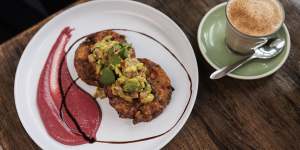
Pirotta’s corn fritters caught the attention of a resident magpie.Brook Mitchell
The competition put her on a path towards a career spent on-call to unpack the latest oddity the ocean spews into humanity’s realm. She’s delved into the context of last year’s fatal and last week’s,fronted the cameras to explain why 230 pilot whales and boiled in their own blubber,and put a on the presence of a bull shark fossicking in inner-city Sydney a stone’s throw from The Grounds of Alexandria.
“Good communication during the pandemic was essential,” Pirotta says. “It was so important epidemiologists showed up to talk about it.
“This is why I show up when there’s a whale stranding. I’m not there sweating in my wetsuit,exhausted,hearing these whales communicating in despair. But what I am able to provide is telling the general public what these people are undertaking to help assist these animals. That’s sort of become a role that I’ve undertaken,not intentionally.”
This week,it’s a of a fleshy washed-up appendage on Magnetic Island that looks like the severed tentacle of a monstrous cartoon octopus. A chunk of the video’s six million viewers and much of the internet at large are convinced it’s a whale penis.
A video of what appears to be some kind of severed animal part has caused debate on TikTok.
“That was an opportunity to go,hold on a second,let’s just provide some grounded evidence. I haven’t heard of whales biting off each other’s genitalia,” Pirotta says.
“Maybe it’s not a whale-related appendage. Maybe this is shark liver,or some other juicy biological component from an animal.”
Pirotta grew up on a 40-acre farm in Murrumbateman,40 minutes out of Canberra. Her Italian mother nixed requests for a horse - too expensive,too dangerous - but allowed Pirotta to adopt Zac the dairy calf,carted down the Barton Highway from Canberra Milk in the back seat of the family’s Land Cruiser. “That was my closest thing I had to a marine mammal,I guess.”
And Spunky the ferret. Named for the rank bull terrier fromRocky’s Modern Lifethat eats trash and drinks his own saliva,this was another small,pungent miracle under the roof of a woman Pirotta describes as “the cleanest woman in the world”.
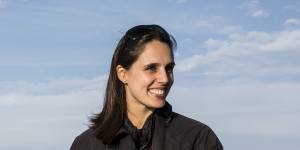
Vanessa Pirotta studied “whale snot” collected using a drone.Jessica Hromas
“My mum was very entrepreneurial. She had a shoe shop for many years. She actually fitted David Attenborough’s grandchildren. I’ve written to him and told him about that.”
The greatest gift her mother presented to Pirotta was a tape ofFree Willy. It sparked an intoxication with the ocean - three hours away from home - and a fascination with the sleek bodies within it.
“That’s my first insight into killer whales and marine mammals and the wild and the captive environment. From then on I loved marine animals. I always wanted to be a dolphin trainer. Always,always,always.”
With the help of an Italian passport thanks to her mum,Pirotta jetted to London after high school to volunteer as a teacher’s aide at a school on the grounds of Windsor Castle. She spotted the Queen three times.
‘I made a lot of money. I was smart.’
Wildlife scientist Vanessa Pirotta,on her time working behind a bar in London. When customers offered to buy her a drink,she asked for the money instead
“The last time I saw her,she was riding a horse,at 11 o’clock on a Monday when I went for a run. She wasn’t wearing a helmet. She was wearing a headscarf,like Sophia Loren.”
Pirotta worked at a London bar,despite the fact she doesn’t drink.
“My mum was always against it. Her father was an alcoholic. Also,I found that a lot of the girls in England would drink to have confidence. And I felt that was just so stupid.”
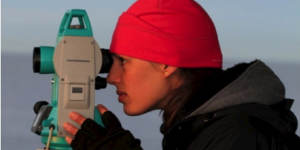
Pirotta tracking whales through a theodolite.Wayne Reynolds
When punters offered to buy her drinks,Pirotta smiled and asked for the cash instead.
“I made a lot of money. I was smart,” she says.
The scheme helped Pirotta fund trips to see where her mother’s family was from in Avellino,east of Naples,and her father’s native Malta.
When Pirotta returned home she enrolled in a Bachelor of Science at the Australian National University and worked at Canberra’s National Zoo. Then the siren song of her childhood dreams drifted back:she landed a volunteer gig at a “marine facility in Coffs Harbour,which had dolphins and sea lions and fur seals. And so I went up and volunteered and at the end of my studies,I was offered a position to be a marine mammal trainer.”
There she honed the skills she would later use as a communicator able to impart sober scientific analysis with the flourish of a woman capable of summoning a backflip from a sea lion. It was also scientific. Pirotta trained dolphins to lie on their side and adapt to the feeling of a blood sampling needle pushing into the venous delta in their tails. She also first collected the elixir that would later kick-start her career:the bacteria-laced chuff of blowhole spray.
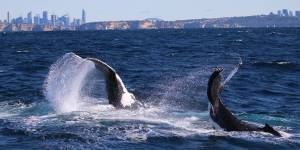
A photo taken by Vanessa Pirotta of humpback whales off Sydney in July 2020.Vanessa Pirotta
She was at the gym,on a day off from the dream job,when she got the call to say that her mum had died suddenly.
“Mum was living her life to the full. I had said goodbye as the last youngest child leaving home. I remember waving to her,” Pirotta says.
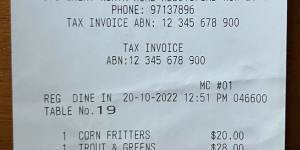
The BIll at The Cove Dining.Supplied
“We never knew that mum had an aneurysm. It’s like a ticking time bomb in her head. She had complained of headaches and a sore neck.
“You had no time to process it. You would never have expected it. So,shock. I literally was in shock. Everything I did,I was kind of like,what am I doing now? That made me assess a lot of things. It does change the way you live your life.”
How?
“[You] just take every opportunity you can. My mum always did. It’s almost like she knew that she was gonna go at a young age. That’s why I always just wanted to make the most of everything as much as I could. Because I don’t know what’s going to happen. Yeah. I think that experience has dictated a lot of things I do.”
Pirotta was 21,and her mother 52. Pirotta took a job as an environmental assessment officer with the government. She oversaw sea burials,where someone’s body is stitched into a shroud,weighted,and given to the ocean. The practice comes under the Sea Dumping Act. Part of her job was choosing burial sites that ensured the bodies didn’t wash back up.
During her stint in government Pirotta began “harassing” her eventual PhD supervisor Professor Rob Harcourt,now head of the Marine Predator Research Group at Macquarie University.
‘They’re amazing. We just know so little about them. It’s an addiction.’
Vanessa Pirotta on mammals
Then came the drone,and crying on a boat off Bondi when the drone first zipped back with a petri dish covered in blowhole spray. (The swab is destined for a PCR test,but instead of COVID-19 the samples yielded Antarctic whale viruses.) Within a week of completing her PhD Pirotta was in Madagascar catching whale snot.
She’s also worked in Tonga,aiming a theodolite - those guns wielded by construction workers who “look like they’re about to book you” - to triangulate the location of humpback mothers and calves. Here,she swam with whales.
“From my trainer years,I know not to anthropomorphise. But you can’t get away from thinking this animal is a mammal - it’s probably thinking. It’s aware. It can choose to be near you if it wants to be. I mean,they’re amazing. We just know so little about them. It’s an addiction.”
Summarising her career now,Pirotta says:“I use emerging technologies for conservation. That’s my thing.” But there’s a lot on Pirotta’s plate:research,media,mentoring,educating the next generation of women in STEM,another book and anxiety about being a young mum within the unforgiving realm of academia. Through her project citizen science project Wild Sydney Harbour,Pirotta is creating a detailed portrait of the ocean life in Sydney Harbour,from steps to the frolicking beside the ferries.
“Whether it’s writing children’s books or trying to use cutting-edge technology to access an animal the size of a bus or identify someone carrying a cockatoo in their luggage,I feel,personally,like I’m doing something good.”
The Morning Edition newsletter is our guide to the day’s most important and interesting stories,analysis and insights..